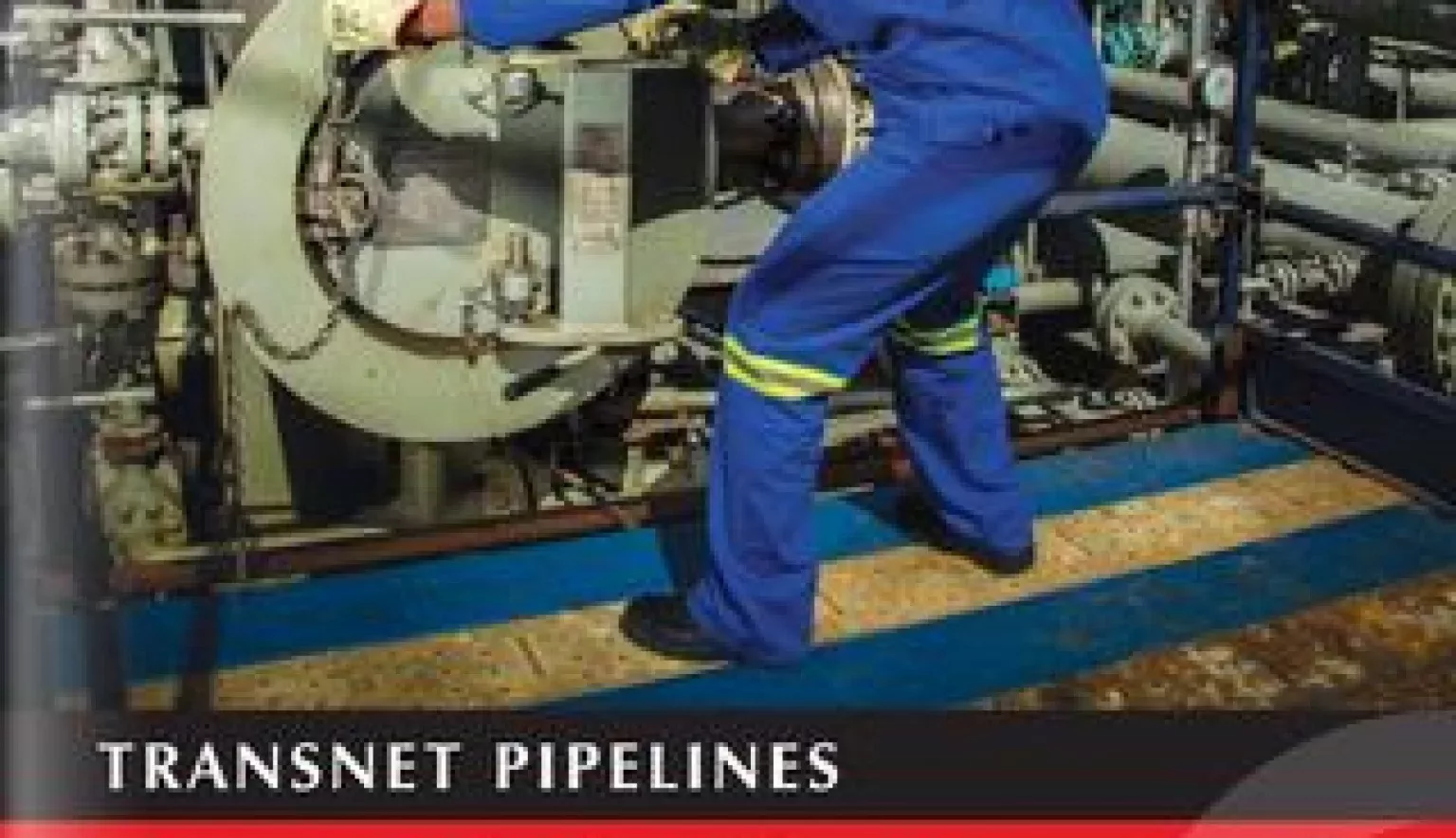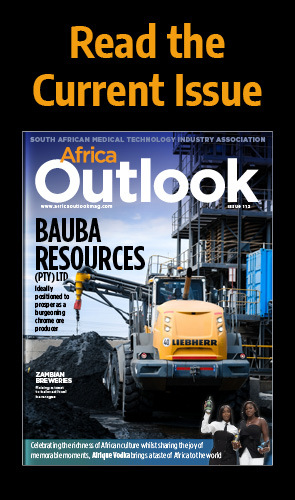Transnet Pipelines is celebrating more than 50 years as the custodian of South Africa’s strategic pipeline assets across both petroleum and gas via a series of recent installations that takes its total network to 3,800 kilometres.
INTEGRITY IN THE PIPELINE
As one of five operating divisions under the Transnet SOC Limited banner – a state-owned Company of the Government of South Africa – the Durban-based business has fulfilled its strategic role in the supply chain of petroleum products in the country since its inception in 1965, and while the nature of its operations have remained consistent throughout the decades, the Company’s success is epitomised by the dramatic increase in volumes that have occurred.
A rise from 1.5 billion litres to more than 17 billion litres is compounded by the transmittance of more than 550 million cubic metres of gas each year; facilitated by an infrastructure conducive to logistical optimisation and continuous improvement.
“Our Tarlton storage facility has rail and road load-out facilities with the main focus of facilitating transportation of petroleum products to Botswana as well,” adds the Company’s Manager of Communications and Marketing, Saret Knoetze. “This facility now also has additive dosing capabilities to inject oil Company-branded additives which will allow each client to uplift products and go direct to market.
“[Additionally], the refractionator was constructed to deal with internal intermixture, but will soon be offered as a service to industry. Furthermore, Transnet Pipelines has aspirations of offering its services to other African countries in the near future.”
CONTINUALLY IMPROVING
Such services comprise the operation and maintenance of petroleum storage and distribution terminals, engineering consulting, optimisation support and training; all being offered on a more widespread scale as part of the Transnet Pipelines ‘Africa strategy’.
“We have been confined to South Africa, but have now developed our ‘Africa strategy’ which entails reviewing opportunities to operate and maintain pipelines, depots and terminals in Kenya and the SADC region,” Knoetze explains. “Through our accredited school of pipelines we are able to offer other petroleum pipeline companies pipeline-specific training courses.
“With more than 50 years experience we are now ready to share our skills, knowledge, pipeline training and operational services.”
Keeping abreast of the latest and best technologies and practices enables such an ethos to flourish, and the Company has evolved accordingly from a manually controlled system to now boast a fully-automated pipeline network system; unveiling a fully-automated Order-to-Cash process as a result.
Knoetze continues: “We provide a safe, efficient, cost effective and reliable service to our customers which are the major reasons behind our success.
“We also benchmark ourselves globally via the international benchmarking Company, Solomons. From these benchmarks we develop key performance indicators (KPI’s) and set ourselves annual improvement targets. We have been successful in achieving our targets and hence have been continually improving in all aspects of the business.”
These internal enhancements have helped culminate in what Transnet is ultimately renowned for though; it’s projects.
The construction of a new 24 inch diameter pipeline with associated accumulator facilities of 354,450 cubic metres has been the Company’s major focus for the past few years, and attentions have now turned to its new multi-product pipelines project (NMPP); Phase 1 of which seeing the construction of coastal and inland terminals, the 555 kilometre 24 inch trunkline, and three 16 inch inland network pipelines.
“The trunkline has three pump and two metering stations,” Knoetze says. “The system is designed to ensure that future market demands are met by adding pump stations along the route to reach the design capacity of 3,000 cubic metres an hour.”
NEW PIPELINES
Transnet Pipelines is simultaneously reviewing other pipeline development projects in both the hydrocarbon and gas domains on the continent in order to expand the Company’s portfolio and footprint.
Upgrades to its security and fire fighting systems on the current facilities are being conducted from a maintenance perspective, while there are also plans to construct a dedicated fuel jet line from Jameson Park to ORTIA as a prelude to Phase 2 of the NMPP which entails an expansion of capacity by installing additional pumps and pump stations.
The complexities and nuances that go hand-in-hand with operations like this represent an even more remarkable Company journey when taking into account the vast evolution that has taken place from its origins back in the 1960s.
Knoetze recalls: “Back in the early 1960s it became evident that with South Africa’s economy expanding rapidly and the oil industry forecasting a 12 percent growth in the demand for petroleum products, the decision was made to construct a pipeline from Durban to the ‘inland’ market area.
“This new 500 kilometre Durban-Johannesburg pipeline was commissioned on 1 November, 1965 and since then, as the inland market demand has grown, additional pipelines were constructed.
“In 1969, a crude oil pipeline was constructed to ensure dedicated supply to the inland crude refinery (Natref) and in 1971, further expansions were done to the refined pipeline and a dedicated aviation turbine fuel pipeline was commissioned from the Natref refinery to the Johannesburg international airport (now known as OR Tambo international Airport).”
Further significant developments occurred in 1977, 1993 and 1996 as the pipelines were extended, the infrastructure around them was improved, and the technologies incorporated evolved. And later, after the turn of the millennium, attentions also turned towards renovation and upgrading the initial constructs; leading to the phased upgrades and additions that have been instigated ever since.
“As the aging infrastructure was running into capacity problems it was decided to construct the 24” diameter NMPP from Durban to Gauteng to ensure the security of supply to the inland market,” Knoetze details. “This new pipeline was brought into operation in January, 2012 – conveying only diesel – while the accumulation facilities in Durban and Jameson were still under construction. Each of these facilities has a capacity of approximately 170 million litres.
“This trunkline will now be brought into multi-product transportation mode in November, 2016 with the completion of the inland accumulation facility and with tightlining of the coastal facility.”
COMPETITIVE VALUE PROPOSITION
Ensuring the smooth and ongoing development out in the field is the equally consistent commitment to honing Transnet’s internal processes, whether that’s from a technological, administrative, personnel or supply chain management perspective.
The former has recently been addressed through the introduction of supervisory control and data acquisition (SCADA) software comprising advanced technology installed on all sites to help the automation transition. The station is then controlled centrally allowing for safer pipeline start-up and shutdown. “Testing equipment at the depots have also been upgraded to the latest technologies to ensure that adequate quality control can be executed on products with new upgraded specifications,” Knoetze adds. “The automated Order-to-Cash process is also being further enhanced and, in addition, as the Company has both regulated and unregulated business, a strong financial reporting system is in place.”
From a supply chain management perspective, excellent planning is required to maintain consistent quality across an ever-growing geographic footprint, and especially with the current focus on the provision of an integrated rail and pipeline service offering to clients in order to maximise the volumes transported and to minimise logistical costs.
“This will allow for an integrated service to customers and improve the overall pipeline and rail efficiency, thereby providing a distinctive, competitive value proposition of the entire fuel supply chain from source to destination,” Knoetze states.
Paramount above all of that however is the Company’s dedication to wider social enrichment; beginning through the support of the Government’s socio-economic upliftment programme which etches its way into areas of enterprise development and black economic empowerment, while being equally instilled into Transnet’s own human resource philosophy.
“Transnet Pipelines has a unique set of skills, and it is therefore extremely important to ensure that the whole-life employee value chain from hire to retire is effectively managed,” Knoetze continues. “This includes attraction, retention, reward and recognition plans as well as talent and succession management.
“Being the only pipeline Company in the country, it is difficult to find a pool of skills and experience in the industry from which we can recruit; hence we recruit personnel that have talent and the necessary qualifications and allow them to gain experience by working with mentors in the Company.”
RELIABLE PIPELINE NETWORK
A dedicated workforce of 650 employees repay the faith showed in them in taking pride in their work and in ensuring a safe, reliable and environmentally friendly process is carried out across all segments of the Company. Safety in particular is an area of great pride for Transnet Pipelines with an exemplary record hugely attractive to its customer base.
“We realise that any long-term disruption in the fuel supply to the economic heartland could have a major impact on the economy and therefore, an effective maintenance plan is crucial,” Knoetze says. “A defect or equipment failure could shutdown the entire pipeline, and as the network is a continuous process, a shutdown at one station could affect the entre pipeline network.
“Due to the nature of the products we transport, we also know the consequences of an event and our emergency response and rehabilitation plan is vital. Safety, health and quality policies are therefore well embedded in the Company.”
Ultimately, the goal then becomes to bridge these two core facets of internal operational excellence, and external quality along the pipeline to ensure that the same successes enjoyed in South Africa over the past 50-plus years can be replicated further into the continent over the next 50 years.
Knoetze concludes: “Our aim is to be a Company that has a well-established footprint in Africa, to be able to reflect on the continued integral part we played in the economy of South Africa, and to still have a fantastic safety record.
“We would also like to have successfully commissioned all aspects of Phase 1 on the NMPP and to have a fully-functional, reliable pipeline network.”
































